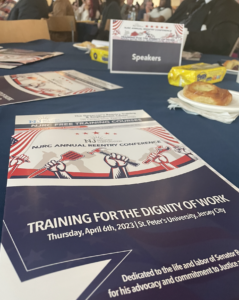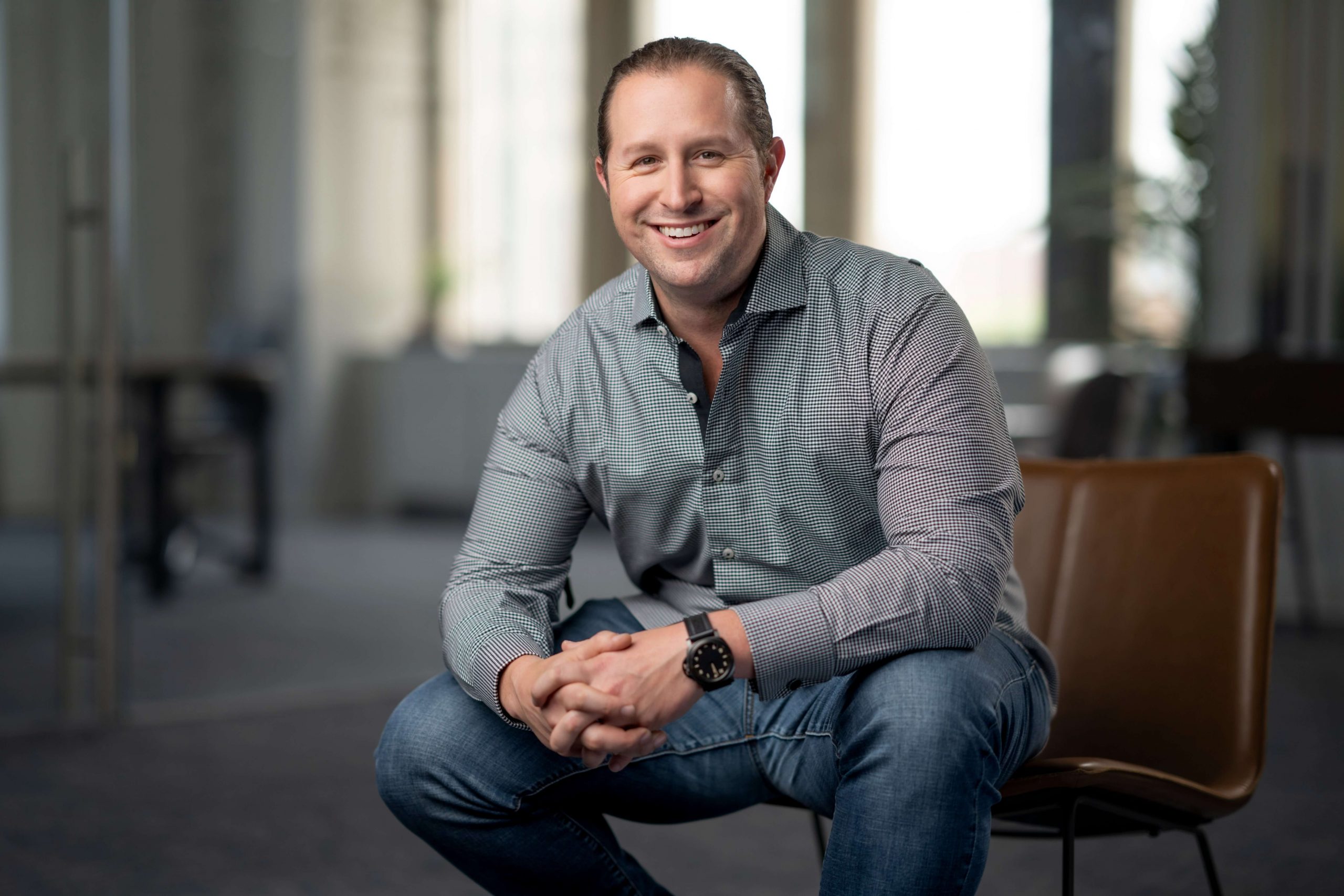My Reflection on Reentry
The only difference between us and them is we didn’t get caught.
I’ve heard this line countless times over the years and every time it makes me feel lucky, ashamed, and determined.
Lucky because I know it is true. Whether it be driving too fast or getting in scuffles nobody saw – it could have gone differently.
Ashamed because I know many have been either penalized for crimes they didn’t commit or penalized unfairly for those they did.
And, determined because I know my actions can affect change, even if it is just changing another person’s point of view.
This past week I had the privilege of speaking at New Jersey Reentry’s Annual Conference on “Training and the Dignity of Work.” The event was held at St. Peter’s University in Jersey City. It was a powerful and moving event with community leaders, government officials, business leaders and reentry program clients that included Governor Phil Murphy, Governor Jim McGreevey, Mayor Ras J. Baraka (Newark), Don Katz (Founder and Executive Chairman at Audible), Congressman Josh Gottheimer, and more.
The all-day conference covered a wide range of topics around challenges facing people returning from prison and explored solutions as we try to create a world where every person has the opportunity to compete.
Here are a few of my biggest takeaways from the day.
1. A Job is More than a Paycheck
It feels like you can’t go on LinkedIn, read a newspaper, or attend a trade show without the conversation of future of work coming up. Workers are lazy, great resignation, quiet quitting, work from home – all of these storylines paint a picture of a workforce that is not willing, not skilled, and not interested in work.
Guess what, not everybody sees it that way.
Why is a job important? This was a question that came up throughout the day. The answer had nothing to do with pay, benefits, or industry. It was something else.
A job gives people dignity and the feeling that they can contribute to something bigger than themselves. A job gives people a sense of agency – especially for individuals that may be returning from an environment that was designed to strip them of any. And, a job ultimately gives you freedom.
A former death row inmate spoke briefly of his experience behind the wall. As a death row inmate, you have no opportunity to work, however he was given the privilege which he said allowed him to focus his attention on something different even for just a few hours a week. The job was to clean toilets on their block and while I don’t remember every word he shared as he talked about the job – I will never forget the pride in which he talked about the opportunity to perform a job that so many would frown upon. It wasn’t about the task – it was about what the job gave him that made it so meaningful.
It kept coming up in every conversation with an NJ Reentry client — a job is dignity and freedom. Something we likely forget when our ability to work has always been assumed and never questioned.
2. Investment in Job Training Must Start Earlier
We call it “corrections” – but we aren’t doing a great job at correcting anything. If we are serious about ensuring people return from prison and transition into work and we are serious about rehabilitation and reducing recidivism then we must act accordingly. We must actually provide the opportunity to find meaningful employment. Alternatively, if the goal is to create a system that yields the worst possible outcomes, where you are not able to get identification, you are not able to get transportation, you are not able to even apply for certain jobs, you are not afforded the same learning opportunities – then our current system is designed perfectly.
We have to start preparing people behind the wall. Today, nearly 2 million Americans are in prison on any given day and 3 in 4 of America’s inmates receive no job training while incarcerated. It’s a failure. A failure for these individuals. A failure for our communities. A failure for our businesses. A failure for our workforce.
It came up often in my conversations that it’s not just about being able to work but having options in the work you choose. And, often the blocker of choice has to do with discriminatory interview practices by companies at which even after a person has served their time they are subjected to a life sentence of jobs they cannot apply to. It also has to do with limiting the pool of jobs they may apply for because of a lack of simple credentials that could easily have been attained while incarcerated.
We must do better.
3. Systems Take Away Faces
Today there is a constant effort in this country to take away the faces of the men and women returning from prison. But it is imperative that we recognize that no one should forever be defined by their worst mistake. Our current systems can take away people’s faces and reduce them to stereotypes that have long lasting effects on the identity of the people trying to transition back into a community.
An estimated 98.9% of people behind the wall will eventually be out. These people will need to be able to take the appropriate action to transition and get on their feet quickly and easily. They will need to know things like how to open a bank account, how to get a driver’s license, and how to apply for a job.
It was shared that, “you can’t just give them a Medicaid card and say good luck – you have to give them a Medicaid card and then show them how to use it.”
You can also say the same for a job. We can’t just give them a job – we have to also then show them how to do it.
Today, we have a lot of work we get to do.
We have the highest rates of incarceration in the world. The US population is equivalent to 4.25% of the world’s population yet a shocking 23% of the world’s incarcerated are here in America. In this country, 1 in 32 Americans are in prison, on parole, or in a reentry program.
I believe it starts with connecting as a community – government, non-profits and the private sector must work together better. Our shortcomings are not because of a lack of resources, but rather a lack of will. When we are willing to work together, we see amazing results. The current national average for reentry job placement is just 37%. Guess what the success rate is for the work of the New Jersey Reentry Corporation? It’s 92%.
Our workforce is only strong if everyone can compete. It can no longer be about they and them. It’s time we make it about us.



